|
   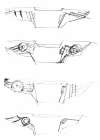    
                                            
     
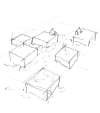 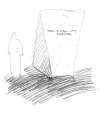
|
> How does
on start on such an ambitious project ?
_ First a visit of the site to get a feel for the atmosphere,
to get in touch with your future partners, to evaluate the
technical constraints, understand the situation and what
is at stake, basically to gauge the range of possibilities,
the potential of the project. The site is near Akita, 500
kilometres to the north-east of Tokyo, next to the deepest
lake in Japan, in the national reserve of Komagatake. The
dam is the first realisation of the national ecological project
launched in 1992. This dam protects the populations of the
Valley from the mudslides of the Komagatake volcano, which
is still active. I want my sculpture to be at the same time
symbolic and functional. In the national parc, I have to
integrate the piece in an almost perfect environment. My
ambition was to create a quiet place where man and nature
dialogue and are complementary.
>どうやって、そのような野心的なプロジェクトを始めますか ?
最初に雰囲気を体験するため、将来のパートナーとコンタクトをとるため、技術的な制約や問題点を知るため、プロジェクトの提供する様々な可能性を検討するため現場を訪問します。
現場は東京から500キロメートル北の、国立公園の駒ヶ岳の中で、日本で一番深い湖、田沢湖の近くにあります。 このダムは1992年に最初のエコロジカルプロジェクトとして始まりました。このダムは谷間に住む住民を駒ヶ岳の火山泥流から保護します。シンボル的で、機能的な作品を制作したいと思いました。国立公園では、完全に自然と統合しなければなりません。私の野心は、人と自然が対話して、相補的である静かな場所をつくることでした。
> Comment commence-t-on un projet aussi ambitieux?
_ D’abord une visite du site pour s’imprégner de l’ambiance,
avoir un contact avec les futurs partenaires, les contraintes
techniques, comprendre la situation, les enjeux, envisager
l’éventail des possibilités qu’offrent le projet. Le
site est près de Akita à 500 kilomètres au nord-est de
Tokyo, aux abords du lac le plus profond du Japon, dans
le parc national de Komagataké. Le barrage est la première
réalisation du programme écologique national lancé en
1992. Ce barrage protège les habitants de la vallée des
coulées de boues du volcan Komagataké.
Je veux faire une sculpture symbolique, une sculpture fonctionnelle.
Dans un parc national, je dois m’intégrer dans un écosystème
quasi-parfait. Mon ambition a été de créer un lieu de quiétude
où l’homme et la nature dialoguent et se complètent.
|
     
    
      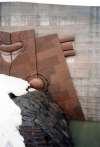 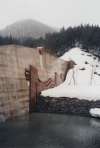     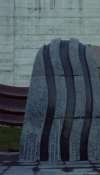         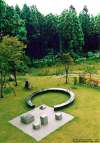 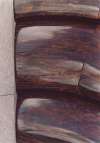 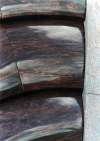    
|
> How does the project
develop from there ?
_ There is a very long period of research, a lot of them,
for such a huge project, a lot of partners to convince collectively
and individually, to make everybody work together. Working
method: sketches, drawings, models and feasibility studies:
fixation weights, resistance of material, so much at stake,
so many dangers. There is absolutely no room for error.
>どうその後プロジェクトは、進展しますか ?
_ 非常に長い探索期間がありました。これだけの巨大プロジェクトでは事前調査 、そして多くの集団や個人のパートナーを納得させなければなりません。しかも、全員で同じ方向に向かって歩かなければなりません。
仕事の手順は、クロッキー、デッサン、図面、製作用模型、実現可能性の計算;固定重量、耐久強度、とにかく多くの問題点、危険を検討しなければなりませんでした。私には失敗は許されませんでした。
> Comment le projet se développe-t-il ensuite ?
_ Il y a ensuite une période de recherches très longue,
beaucoup de recherches pour un projet gigantesque, beaucoup
de partenaires à convaincre collectivement et individuellement,
il faut faire marcher toutes les personnes ensemble.
La méthode de travail: croquis, dessins, maquettes pour
la création, puis des calculs de faisabilité: poids fixation,
résistance des matériaux, il y a tellement d’enjeux, de
dangers. Il n’y a pas de marge d’erreur pour ainsi dire.
|
  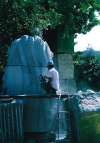  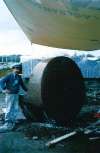            |
> You are a creative
person and you are also an executor, a workman.
_ I need both aspects, meditation and creation but also to
lay my hands on the material. To feel complete, I need both
the intellectual and the physical work.
> あなたは発案者、そして制作者、労働者です。
_ 私は両方の局面を必要とします、瞑想と創造、更には実際に素材を自分の手で細工する。私は自分が熟成する為に、知的な仕事と身体を使う仕事の両方を必要とします。
>Tu es un concepteur et tu es aussi un exécutant, un
ouvrier.
_ J’ai besoin des deux aspects, méditer, créer et aussi
mettre les mains dans la matière. Pour m’épanouir, j’ai
besoin de travailler intellectuellement et physiquement.
|
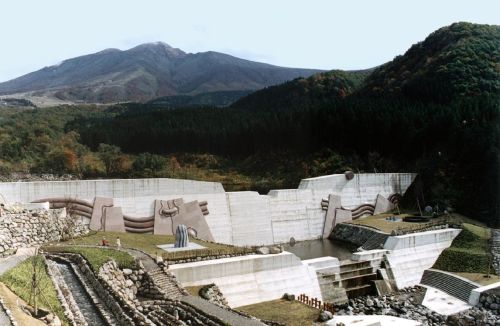 |
> The finished work ?
_ The ornamented dam is 120 meters wide, 16 meters high,
which amounts to 250 tons of sculpted pink granite. The
bas-relief represents the Waves, Rocks and the Sun. I
dialog with the Water with the sculpture «Kawa» in blue
granite, on the left-hand side. On the right-hand there
is the lanscape sculpture “Banc de l’Amitié”, «The Bench
of Friendship»in black granite. This is a sculpture for
the community, where people can come and sit. At the
entrance of the Cultural Park of Tazawako, I made a signpost
landscape sculpture in pink granite, which can be seen
and read from the road. It invites you to discover this
beautiful artwork.
> 仕上がった作品は ?
_ 作品となったダムは幅120メートルで、高さ16メートルです。そして、凡そ250トンのピンクの御影石で出来ています。大レリーフは波、岩、太陽を意味します。私は、左側のモニュメント「川」で、水との対話をします。
社会的意味を持つ彫刻「友情のベンチ」は右側にあります。
文化公園と名付けられた入り口にも大きな目印のモニュメントを作りました。それは運転している人からも見え、徐々にこの素晴らしい環境に招きます。
> L’œuvre finie ?
_ Le barrage sculpté mesure :120 mètres de large, 16 mètres
de hauteur, soit 250 tonnes de granite sculpté. Le grand
tableau en bas-relief représente les Vagues, les Rochers
et le Soleil.
J’évoque l’eau avec « Kawa », une sculpture qui montre
«la Rivière», sur la partie gauche.
C’est une sculpture sociale sur la droite «Le banc de l’amitié
».
J’ai sculpté également un monument signalétique à l‘entrée
du Parc Culturel de Tazawako. Il se lit depuis la route.
Il invite à découvrir graduellement ce très beau site.
|
 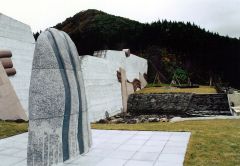
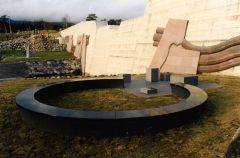 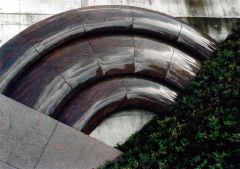
 
|
> How would you sum up
this experience ?
_ It is a challenge I never expected I would face, but it
was a great collective success. This project had very positive
constraints, notably an aquatic path for fish, walking paths
for visitors, the prohibition against the use of polluting
or visually aggressive materials.
This sculpture is part of the Earth Weaving project but this
time, frontiers were crossed in the making of the sculpture
itself: the dam is in Japan, part was made in Chennai, India,
an other part in Brittany, France. Parts of it have crossed
oceans unifying populations in this idea of a human culture
with common values.
> あなたの総合的な結果は ?
_ それは考えても見なかった挑戦でした。そして大きな総体的な成功で終わりました。 このプロジェクトは魚のための水の経路、訪問客のための散歩道、公害問題にならない素材の選択、視覚的な目障公害等、環境問題では非常に制約の多いプロジェクトでした。
この作品はプロジェクト「地球を縫う」の一部です。日本に設置された彫刻の一部分がインドで、他はフランスのブルターニュでと、国境を越えて制作され、
海を横断して 同一の価値観を持つ人間を集めたのです。
> Ton bilan ?
_ C’est un défi auquel je ne pensais jamais être exposé.
Il s’est soldé par un très grand succès collectif. Ce
projet comprenait des contraintes très positives, notamment
un chemin pour les poissons, des parcours pour les visiteurs,
l’interdiction d’utiliser des matériaux polluants ou
nuisibles visuellement.
Cette sculpture fait partie du tricot de la terre, mais
en plus cette fois-ci, les frontières ont été dépassées
par la fabrication même : la sculpture est installée au
Japon, une partie a été réalisée en Inde, une autre partie
en Bretagne, les pièces ont traversé les mers, unifiant
les peuples dans l’idée de culture humaine, avec des valeurs
communes.
|
|
|
|
|
|
|
|
|
|
|
|
|